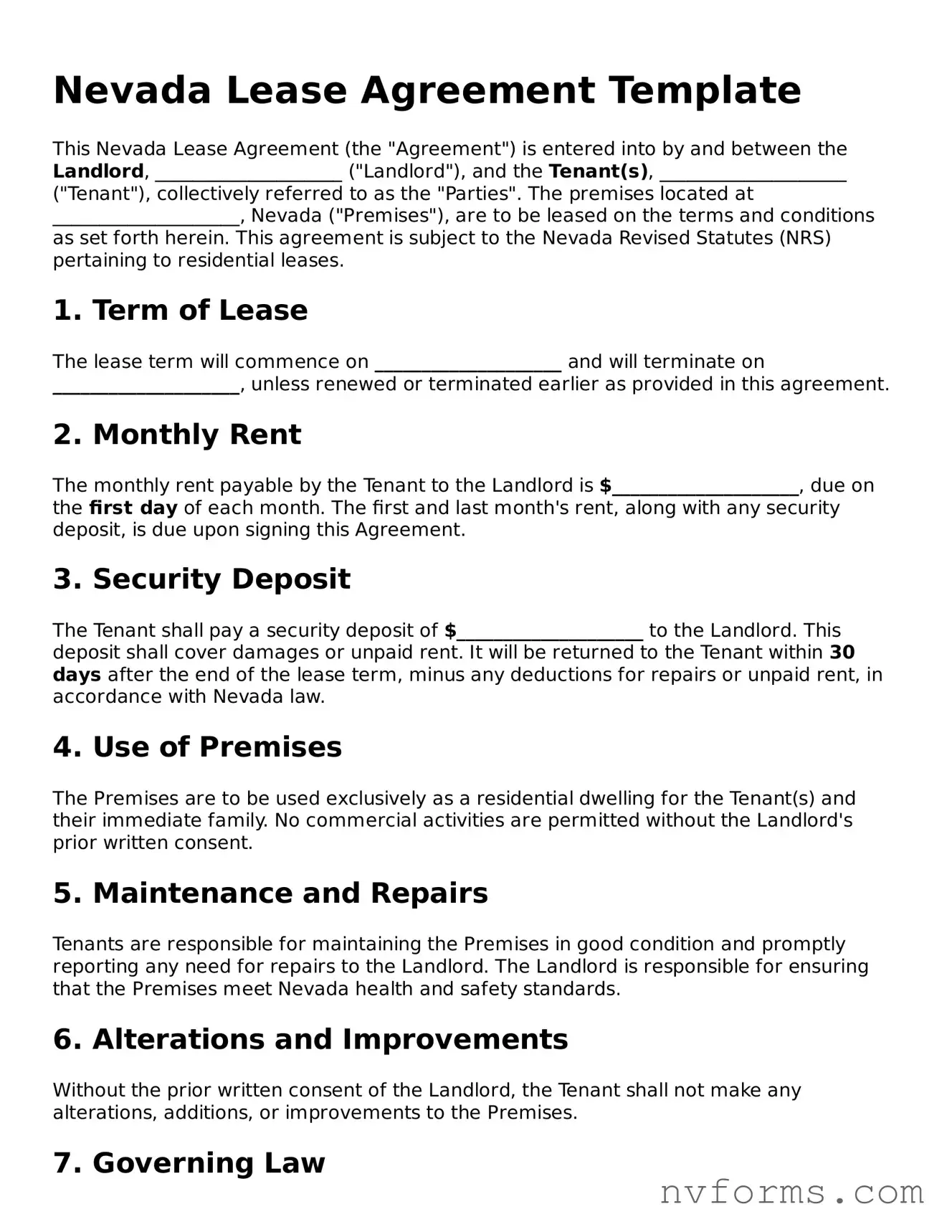Nevada Lease Agreement Template
This Nevada Lease Agreement (the "Agreement") is entered into by and between the Landlord, ____________________ ("Landlord"), and the Tenant(s), ____________________ ("Tenant"), collectively referred to as the "Parties". The premises located at ____________________, Nevada ("Premises"), are to be leased on the terms and conditions as set forth herein. This agreement is subject to the Nevada Revised Statutes (NRS) pertaining to residential leases.
1. Term of Lease
The lease term will commence on ____________________ and will terminate on ____________________, unless renewed or terminated earlier as provided in this agreement.
2. Monthly Rent
The monthly rent payable by the Tenant to the Landlord is $____________________, due on the first day of each month. The first and last month's rent, along with any security deposit, is due upon signing this Agreement.
3. Security Deposit
The Tenant shall pay a security deposit of $____________________ to the Landlord. This deposit shall cover damages or unpaid rent. It will be returned to the Tenant within 30 days after the end of the lease term, minus any deductions for repairs or unpaid rent, in accordance with Nevada law.
4. Use of Premises
The Premises are to be used exclusively as a residential dwelling for the Tenant(s) and their immediate family. No commercial activities are permitted without the Landlord's prior written consent.
5. Maintenance and Repairs
Tenants are responsible for maintaining the Premises in good condition and promptly reporting any need for repairs to the Landlord. The Landlord is responsible for ensuring that the Premises meet Nevada health and safety standards.
6. Alterations and Improvements
Without the prior written consent of the Landlord, the Tenant shall not make any alterations, additions, or improvements to the Premises.
7. Governing Law
This Agreement shall be governed by and construed in accordance with the laws of the State of Nevada.
8. Entire Agreement
This document constitutes the entire agreement between the Parties and supersedes any prior understanding or representation of any kind preceding the date of this Agreement. There are no other promises, conditions, understandings, or other agreements, whether oral or written, relating to the subject matter of this Agreement.
Signatures
By signing below, the Parties agree to the terms and conditions of this Nevada Lease Agreement.
Landlord's Signature: ____________________ Date: _______________
Tenant's Signature: ____________________ Date: _______________
